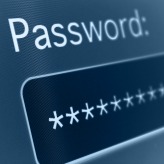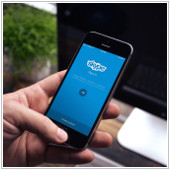Is being responsible for electronic medical records a daily source of trepidation for you or your business? While the sentiment is understandable, it often results from a lack of understanding about what HIPAA compliance actually means. As industry-wide penalties continue to rise every year, it’s essential to take a closer look at who is being […]
 Is being responsible for electronic medical records a daily source of trepidation for you or your business? While the sentiment is understandable, it often results from a lack of understanding about what HIPAA compliance actually means. As industry-wide penalties continue to rise every year, it’s essential to take a closer look at who is being fined, and why. Keep reading for more details on the most recent case.
Is being responsible for electronic medical records a daily source of trepidation for you or your business? While the sentiment is understandable, it often results from a lack of understanding about what HIPAA compliance actually means. As industry-wide penalties continue to rise every year, it’s essential to take a closer look at who is being fined, and why. Keep reading for more details on the most recent case.
As the largest fully integrated healthcare system in Illinois, Advocate Health Care Network’s mismanagement of electronic medical records (EMR) came as quite a shock. Regardless of your feelings on such a sizable provider being unable to maintain secure EMRs, what can’t be argued is the precedent set by last month’s $5.5-million settlement.
How exactly did it come to such a historic penalty? The answer is threefold. Firstly, Advocate failed to perform the risk assessments mandated by HIPAA regulations -- an oversight that could have potentially prevented the other two infractions. Secondly, Chicago’s premier healthcare network failed to obtain proper written agreements with each of the business partners who had access to its data, which may have gone unnoticed if one of its associates had not been the subject of a security breach.
The final infraction, and arguably the most directly relevant to Advocate’s internal security policies, was the unsatisfactory safeguards in place on two stolen laptops with confidential medical information. While the breach of its business partner’s network only put 2,000 EMRs at risk, the stolen computers had access to almost 4 million.
So, if you’re tired of vague platitudes about ‘penalties for lax data compliance’ or the ‘liability risks of mediocre security,’ this is your answer: inadequate preventative measures, unfit business partners, and poor internal security protocols can spell millions in damages. Unfortunately, this isn’t just an aberrant case -- the total punitive damages for HIPAA noncompliance in 2015 totaled $6.2 million; after just over eight months into 2016, they currently stand at $20.3 million.
Keep your company’s name off the growing list of companies that didn’t have suitable systems in place when it mattered most. Our EMR management practices provide a full suite of care for your data records; from prevention to end-point security, your information is safe with us. Our proficiency in the healthcare IT industry spans a wide variety of experiences and know-how. Contact us today. We’d love to tell you all about it.

 In 2012, cloud storage firm Dropbox was hacked with over two-thirds of its users’ details dumped all over the internet. While the company initially thought a collection of email addresses was the only thing stolen, it was wrong -- passwords had been compromised as well. This new information came to light when the database was picked up by a security notification service. So if you were using Dropbox before the incident and haven’t changed your password since, you should do so right away.
In 2012, cloud storage firm Dropbox was hacked with over two-thirds of its users’ details dumped all over the internet. While the company initially thought a collection of email addresses was the only thing stolen, it was wrong -- passwords had been compromised as well. This new information came to light when the database was picked up by a security notification service. So if you were using Dropbox before the incident and haven’t changed your password since, you should do so right away. It’s hard to deny how reliable Skype is as a VoIP telephony system. Having something good doesn’t mean you should stop at that; for the sake of your small- or medium-sized business, you should always be on the lookout for the next best thing that helps facilitate your company’s growth. Enter Skype for Business. We’ve compiled three main reasons why you should consider utilizing this tool as opposed to relying on its predecessor.
It’s hard to deny how reliable Skype is as a VoIP telephony system. Having something good doesn’t mean you should stop at that; for the sake of your small- or medium-sized business, you should always be on the lookout for the next best thing that helps facilitate your company’s growth. Enter Skype for Business. We’ve compiled three main reasons why you should consider utilizing this tool as opposed to relying on its predecessor.
 As the spectacle and competitive atmosphere of the Rio Olympic Games have drawn the world’s attention, hackers who use social engineering are inching closer to our private information. Although our systems may be prepared for the likes of malware and worms, social engineering is a different beast of its own. If used effectively, hackers can manipulate people into disclosing personal information, rendering security systems useless. So how exactly do they go about doing this? Below are five of the most utilized social engineering tactics you should be aware of.
As the spectacle and competitive atmosphere of the Rio Olympic Games have drawn the world’s attention, hackers who use social engineering are inching closer to our private information. Although our systems may be prepared for the likes of malware and worms, social engineering is a different beast of its own. If used effectively, hackers can manipulate people into disclosing personal information, rendering security systems useless. So how exactly do they go about doing this? Below are five of the most utilized social engineering tactics you should be aware of.